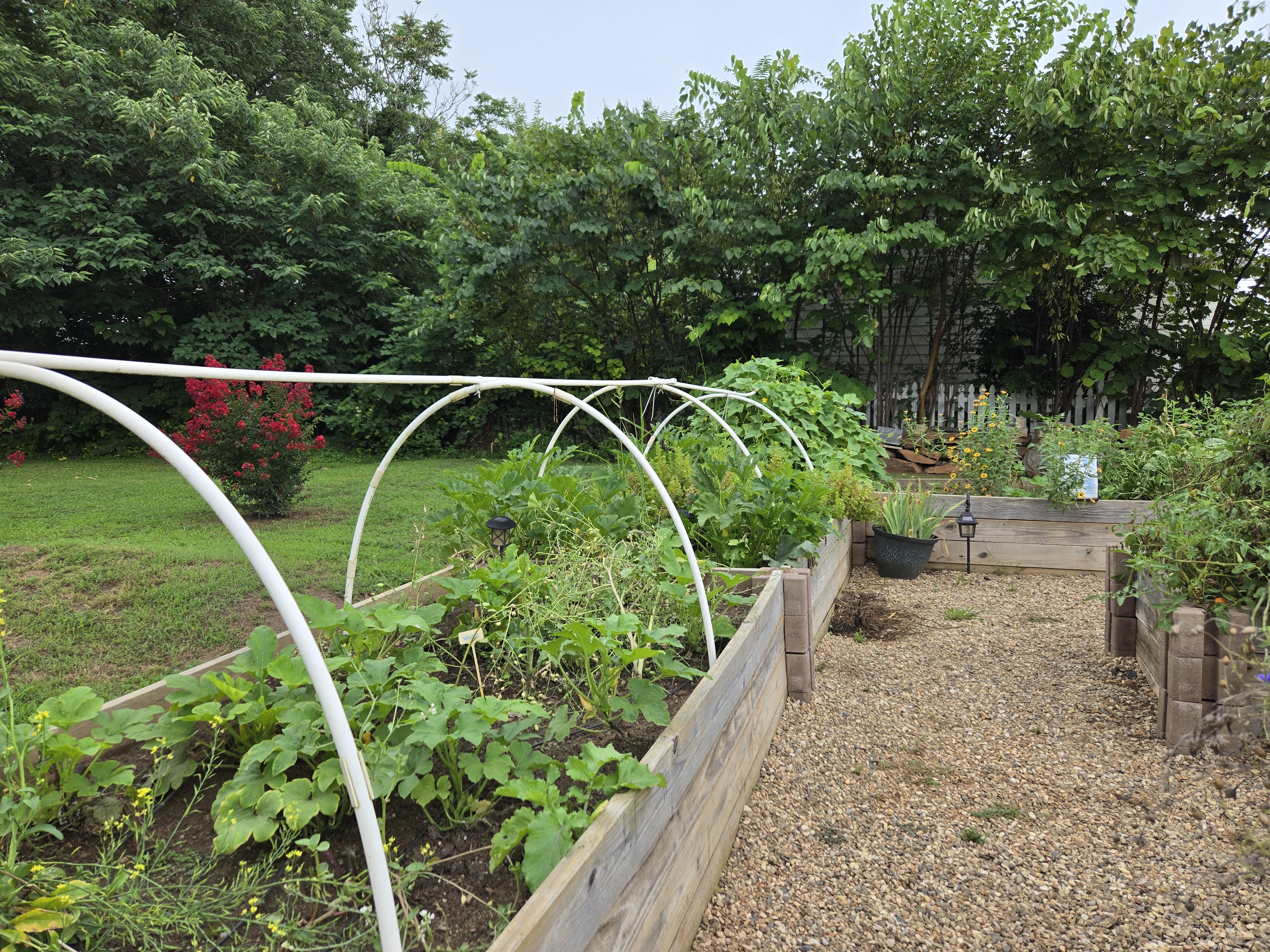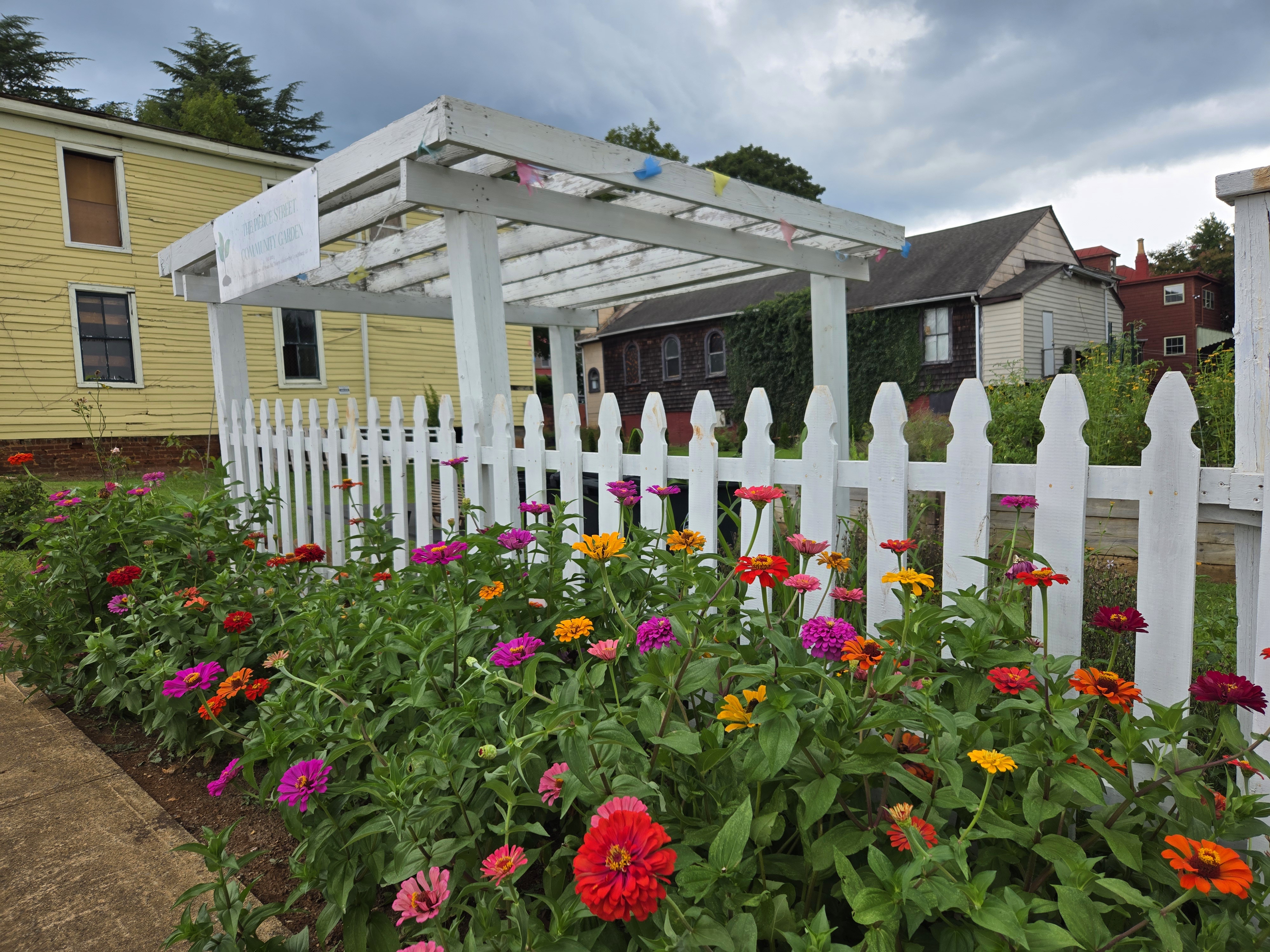When Geraldine Wood looks out the window of her Pierce Street home today, she can still picture the bustling neighborhood of her childhood: the Baptist church where she went to Sunday school, the beauty shop tucked in the basement of a home next door, the corner grocery store where she would pick up the “best meat you can think of” for family dinner.
She can point to where everyone lived: the tax preparer, the principal, the pastor.
She can rattle off the history of civil rights leaders who lived in her midst in the Lynchburg neighborhood: Anne Spencer and R. Walter “Whirlwind” Johnson, to name a few.
She said she feels lucky that Pierce Street raised her.
“There’s a lot of history here that people probably don’t know about,” said Wood, who’s 93. “But I know quite much about it. And I know it as my nice neighborhood.”
That bustling Pierce Street is gone. It’s been replaced by a quiet neighborhood, where historic markers and shady trees outnumber cars that pass through.
A nonprofit organization called Pierce Street Gateway wants to bring the block — and its legacy of Black history — back to life.
Its work centers on revitalizing what once was the Calloway Store, one of the first Black-owned-and-operated grocery stores in Lynchburg, which dates back to 1877. After sitting vacant for the past 40 years, the shop is now being redesigned as a museum and community center that will be operated by the nonprofit. The effort builds on decades of preservation work accomplished by leaders of The Anne Spencer House and Garden Museum and other local historic sites.
Lauren Dianich, the project’s architect and the vice president of Pierce Street Gateway’s board, said the final building will combine two essential elements of a traditional corner grocery store — healthy food and strong community — to engage visitors in the history of Pierce Street.
The organization’s work at 1301 Pierce St. has been ongoing since 2018 and is picking up speed as the store’s grand opening in spring 2026 approaches, Dianich said.
But the organization isn’t waiting for the caution tape to come down before programming can start up, Dianich said. Instead, Pierce Street Gateway is making use of outdoor space behind the store to start its mission now through monthly farmers markets, a community garden program and walking tours of the Pierce Street Renaissance Historic District.
“We’ve got the momentum before we even actually open the doors,” Dianich said. 
Walking in the footsteps of luminaries
The sad reality of history is that it’s erased if it’s not protected, said Charles Gibson III, one of Pierce Street Gateway’s board members.
“That’s why it’s very important to be intentional about preserving the integrity of buildings that speak to our history, as a city and as a country,” he said.
Not all historic buildings have been protected equally over decades of preservation efforts, according to reporting by The New Yorker in 2020. The National Register of Historic Places, the list of sites deemed worthy of preservation by the federal government, has more than 95,000 entries. Of them, 2% focus on the experiences of Black Americans, The New Yorker found.
In part, the discrepancy is due to the racial biases that can be indirectly written into criteria that determine how sites are selected for preservation. For example, “architectural significance” criteria can exclude modest buildings such as cabins of enslaved people and tenement houses, the magazine found. In other instances, the history of Black neighborhoods has been actively erased through processes ranging from gentrification to highway construction, according to The New Yorker.
Those patterns make the preservation of Pierce Street’s Black history all the more remarkable, said Shaun Spencer-Hester, granddaughter of Pierce Street legend Anne Spencer and executive director of The Anne Spencer House and Garden Museum. Spencer was a prominent Harlem Renaissance poet who became the first Black woman and first Virginian to be included in the Norton Anthology of Modern Poetry.
Of Lynchburg’s 74 historic markers, eight are in the Pierce Street district, according to the state Department of Historic Resources.
“It’s not rare that African Americans wished to live amongst others who shared their ideas,” Spencer-Hester said. “This historic district is rare because it’s documented. It’s still here.”
In fact, the city considered “wiping out the neighborhood” on Pierce Street in the 1970s to build a section of U.S. 29, Spencer-Hester said. But the Anne Spencer house had already been deemed a national historic site, so the street was protected.
“All that history would be gone,” she said. “The people in this community who gathered together to protect the Anne Spencer house didn’t know they were saving this whole neighborhood.”
Some Pierce Street historic markers recognize local heroes, including Clarence William “Dick” Seay, who led Dunbar High School to be one of the top-rated Black high schools in the segregated South and served as the first Black professor at Lynchburg College and the city’s first Black vice mayor.
Other signs mark areas of national significance, including the home of R. Walter “Whirlwind” Johnson, who led the effort to desegregate the sport of tennis.
Spencer-Hester said the significance of the neighborhood is evident in the guests who were visitors there: W.E.B. Du Bois, Langston Hughes and Martin Luther King Jr. all paid Pierce Street a visit throughout the 20th century.
The museum at the Calloway Store will tell the stories of nine “Lynchburg luminaries” of Pierce Street, as Dianich calls them, from an artist to a Tuskegee Airman.
Gibson said that while the exhibits should be interesting for visitors of all ages, he hopes that children, especially, will walk away knowing that “you, too, can do something incredible and leave a mark and leave the world a better place, just as they did.”
“It’s one thing to look up to the MLKs on the national level,” he said. “But it resonates more deeply when it’s somebody from where you’re from.” 
Growing food for thought
To make way for museum exhibits, the new Calloway Store won’t have room for a fully stocked bodega, Dianich said. Instead, the store will host farmers markets on the first Thursday of every month and will have produce available to pick for free at the community garden out back.
Because Pierce Street is a food desert with no grocery stores within walking distance, Dianich said, Pierce Street Gateway leaders are determined to make the farmers market accessible to all. They set their prices under those of Lynchburg grocery stores and accept SNAP benefits.
The organization sells other goods at the market to break even, Dianich said. At the upcoming market on Thursday, she’ll be selling bouquets of flowers that she grew at the Pierce Street garden this summer.
A Pierce Street market wouldn’t be complete without activities like an open mic for live music, crafts for children and walking tours of the historic district, Dianich said — that’s what brings the community spark back to the store that was once the center of the neighborhood.
“Museums have to be living, active participants in society. If they are just showcasing relics, they will not be successful,” Dianich said. “You want to take that history and make it a jumping off point.” 
Bringing the museum to life
The corner grocery store has exchanged hands and changed names many times throughout its 150-year history. The Spencer family owned the store most recently, Spencer-Hester said, from 1906 until 2018.
When Spencer-Hester moved to Lynchburg in 2008, the building was condemned, she said. She worked with her brother and son to raise money and revive the store, adding modern features such as plumbing and electricity. Over the next decade, Spencer-Hester worked to make the store a community space and hosted open mic nights, outdoor festivals and more, she said.
Eventually, Spencer-Hester’s mother decided to sell the store so her family could focus on other opportunities.
Pierce Street Gateway’s founding president bought the building for $48,500 and gave it to the organization in 2018, Dianich said. As the organization’s leaders spread the word about the restoration project, donations followed. Dianich said the group has raised $230,000 in a quiet campaign and hopes to get $200,000 more from a public campaign that will launch this month.
Since 2024, Pierce Street Gateway has secured about $270,000 worth of in-kind donations to fix the building’s roof, foundation, porch and other structural essentials, Dianich said. Atelier 11 Architecture, which Dianich serves as the president of, has provided the architectural drawings pro bono, too.
When the Calloway Store opens in spring 2026, it will join the Anne Spencer House and Garden Museum and the Robert Walter “Whirlwind” Johnson house as landmarks on Pierce Street. Dianich said she hopes that, one day, the street will be a destination for history lovers across the country as tourists wander from building to building and experience the time capsule that is Pierce Street.
Spencer-Hester said that goal has already been accomplished by the Anne Spencer historic site. Her family has recorded visitors from 25 different countries at 1313 Pierce St. since the poet’s home opened as a museum in 1977.
Spencer-Hester added that it’s been difficult to see the corner grocery store leave her family’s hands, and she’s skeptical that the museum at the Anne Spencer home will be able to collaborate with Pierce Street Gateway as the two organizations compete for donors and visitors.
“We were willing to work with them to begin with, because we thought, ‘Hey, somebody else is here to partner with us and help us,’” she said. “But they’ve just taken it, you know, away from us.”
Dianich said that Pierce Street Gateway plans to direct visitors to the Anne Spencer house and the Whirlwind Johnson house, not steal them away. The Calloway Store will present a general history of nine Pierce Street luminaries and will support other museums to “do what they do best” and focus on more specific Pierce Street history niches, Dianich said.
“A street with three museums will be more successful as a cultural destination than a street with only one museum,” Dianich said. “It will bring more awareness of our rich history, not less.”
Until the store reopens, there’s a long list of work to be done, Dianich said. The building’s walls need to be reinforced, the floor needs to be finished, the exhibits need to be designed and installed, and more.
Dianich said she isn’t intimidated by the challenge. After completing more than 100 historic restoration projects in her 30-year architecture career, she still finds motivation in designing community spaces.
“As an architect, obviously we try to design beautiful buildings and functional buildings,” she said. “But the most important buildings are buildings that bring community together and make you feel like you belong somewhere.”



